
Vittoria


Vittoria
The house known as Vittoria was one of the buildings erected by Sir R. Harvey and named after a battle at a place called Vittoria during the Peninsular War where the combined army of British, Portuguese and Spanish soldiers defeated the French.

Below is the original plan for Vittoria dated 1829
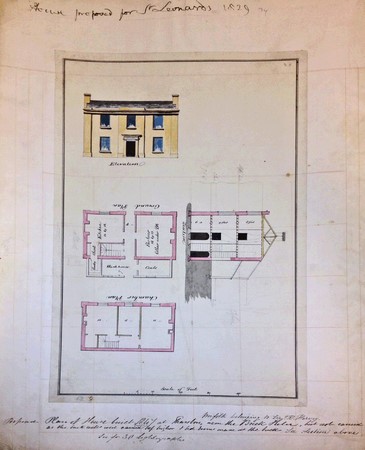
The design for Vittoria was originally proposed for a house at St Leonard‘s in 1829. The text at the bottom reads, ”Proposed plan of house built 1847 at Tharston, Norfolk belonging to Sir R Harvey, near the brick kiln, but not carried out as the back walls were built higher and 1 bedroom made at the back. The layout of the house is pretty much the same today.
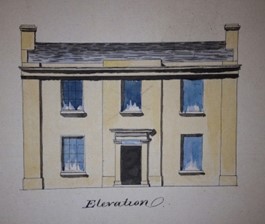
The above is an enlargement of the architect's impression of the house.
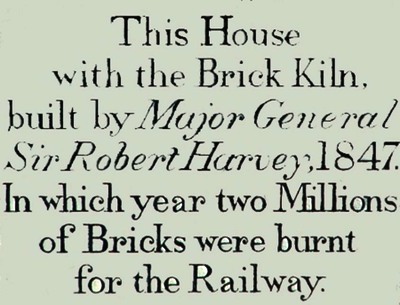
The image above is a stone plaque set above the door of Vittoria showing the build date of 1847 and its connection to the brick kiln.
Another local connection ...
Looking around a local churchyard I found this reference to Vittoria .....
In Mulbarton churchyard is a memorial with the inscription:
Sir William Bellairss
Born 10th October 1793s
Died 2nd October 1863
Served in the 15th Kings Hussars
at Morales, Vittoria, Pyreneess
Pampeluna, Orthes, Tarbes, Toulouse,
Quatre Bras, Waterloo
There is also an inscription to his wife on the side of the memorial:
CASSANDRA LADY BELLAIRS
wife of the above Daughter and Heiress
of the late Edmund Hooke of Mulbarton
died 1st November 1876 aged 77 years
SIR WILLIAM BELLAIRS, Kt., of Mulbarton Lodge, Mulbarton, Norfolk, was a magistrate for the county. He was the 4th and youngest son of the late Abel Walford Bellairs, Esq., of Uffington, Lincolnshire, High Sheriff of Rutlandshire, and was descended from the ancient family of Bellairs, of Kirby Bellairs, near Melton Mowbray, Leicestershire. Sir William joined the 15th Hussars in 1811, and retired from that regiment as a Captain in 1 819. During his time he fought in the Peninsular Campaigns of 1813 and 14, participating in the battles of Morales, Vittoria, the Pyrenees, Pampeluna, Orthes, Tarbes, and Toulouse. He was also present in the great actions of 1815, Quatre Bras, the preliminary engagement to the decisive Battle of Waterloo that occurred two days later, and at Waterloo. In the retreat from Quatre Bras, he had a horse killed from under him, and at Waterloo was wounded twice.
After the war he went to Trinity Hall, Cambridge.
In 1822 Sir William Bellairs married Cassandra Wilson Hooke, daughter and heiress of the late Edmund HOOKE, Esq., Barrister-at-Law, of Norwich, and of Mulbarton Lodge, the descendant of a family of long standing in Norfolk.
His children were Edmund Hooke Wilson Bellairs, Capt. Leopold Bellairs and Lieut. Gen. William Bellairs, K.C.M.G. - C.B. Some have their own interesting stories.
In 1837, Sir William received the appointment of one of Her Majesty’s Exons in the Yeomen Body Guard. “THE Queen has been pleased to appoint Edmund Hooke Wilson Bellairs, Esq. (late Lieutenant of the 7th Royal Fusiliers), Exon of Her Majesty’s Body Guard of the Yeomen of the Guard, vice Sir William Bellairs, resigned.” - The Edinburgh Gazette. The Queen was this day pleased to confer the honour of Knighthood upon Captain William Bellairs, Senior Exon of Her Majesty’s Guard of Yeomen of the Guard.” - The London Gazette, 19th May, 1848.
He died on 2nd October, 1863, aged 69 at 7 Osnaburgh St, St Pancras, Middlesex, England but was buried in Mulbarton as it was his ‘home’.
So a link to Vittoria! Also a link between the villages of Mulbarton and Tharston.
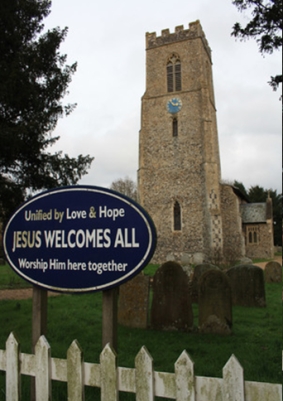
Mulbarton St Mary Magdalen Church
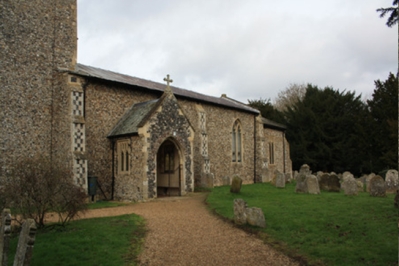
Entrance porch on southern side
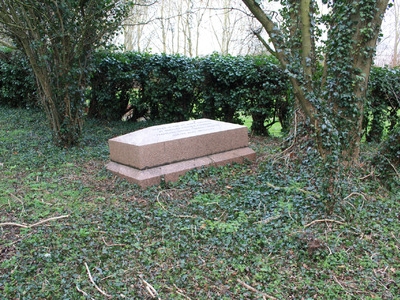
Bellairs memorial at rear of original graveyard
Page last updated: 4 Jan 2024
© Nigel Peacock 2024